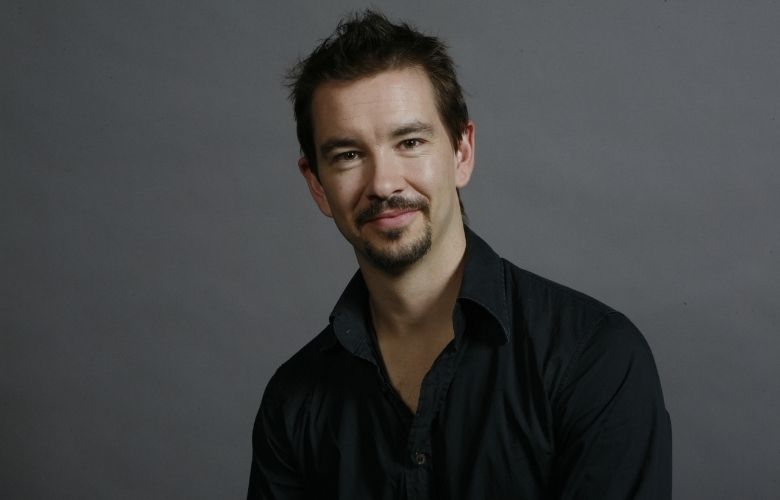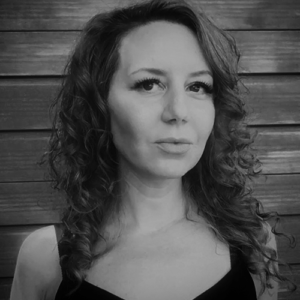
Shane Placentino is the Australian revival director of the OA production of Madama Butterfly. The classic opera will run from 29th June – 30th July at the iconic Sydney Opera House. Ahead of opening night, we talk to Shane Placentino about his fascinating career, and what we can look forward to from Graeme Murphy’s production of the Puccini opera.
Fluttering beauty, caught and pinned, yet beautiful still.
Constrained, cocooned, caught in a moment of desire, Butterfly is incandescent. In her embrace, Pinkerton finds paradise, then cruelly condemns his bride to purgatory.
Graeme Murphy’s arresting production of Madama Butterfly takes a contemporary look at Puccini’s alluring heroine using a towering digital set.
Fragments of film flutter across the stage, creating a dynamic backdrop for Murphy’s vision of Butterfly. He draws on his roots in choreography to capture the grace and gravity of a story that begins in rapturous love and ends in the cruellest heartbreak.
Puccini’s sublime music imbues this ageless story with impossible beauty, from the irrepressible famous aria ‘One fine day’ to the intense finale.
South Korean soprano Sae Kyung Rim’s voice is in demand the world over and her Butterfly is richly nuanced. Diego Torre gives Pinkerton complexity and depth through his exemplary technique and timbre. Carlo Montanaro conducts.
Adelaide born Shane Placentino graduated from The Australian Ballet School in 1990 and was accepted into the Australian Ballet in 1991. As a member of the Ballet, Shane danced in the entire classical and contemporary repertoire. He also worked with Graeme Murphy and Janet Vernon appearing in Murphy’s Nutcracker and Beyond Twelve. After ten years with The Australian Ballet, Shane left in 2000. He joined Sydney Dance Company in 2002, and his repertoire there includes: Ellipse, Air and other invisible forces, Salome, Free Radicals, the role of ‘Jack’ in Tivoli, Underland, Random Play, Some Rooms, Grand, Hua Mulan, Berlin and Ever After Ever.
Other credits he is proud of include performing with The Australian Ballet: full classical and contemporary repertoire including Swan Lake, The Sleeping Beauty, Giselle, The Merry Widow, Jiri Kylian’s Sinfonietta, Nacho Duato’s Jardi Tancat, Stanton Welch’s Red Earth, John Cranko’s Romeo and Juliet and Kenneth MacMillan’s Manon. In 2008 Shane assisted and performed in Meryl Tankard’s Inuk2 and was appointed the stage manager for Rafael Bonachela’s recent work with Sydney Dance Company.
I’m very well thank you. The preparations for Madama Butterfly are progressing quickly. Production meetings, re-acquainting myself with Puccini’s beautiful music and studying Graeme Murphy’s lavish production take up most of my time at the moment.
My first overseas trip was with The Australian Ballet to the Italian Riviera at the Nervi Festival. We performed ‘Coppelia’, Act 3 ‘Sleeping Beauty’ and Stanton Welch’s ‘Of Blessed Memory’ among others. Being an outdoor event presented us with some challenges, like dew on the stage deck making it very slippery. I don’t know how those ladies danced en pointe without injuring themselves.
I remember giggling as a train went by behind us and tooted as we were in the middle of Act 1 Coppelia – not quite of the period! And the beauty of the trees being lit up around the stage as we performed was spectacular.
Performing at the Joyce Theatre in New York with Sydney Dance Company and experiencing the hype and energy of Manhattan was incredible. I’ve always felt SDC has punched above its weight and Americans loved our energy and creativity.
In the late 90’s The Australian Ballet and Bangarra Dance Company collaborated to produce Stephen Page’s ‘Rites’. Initially I was cast in it but, due to injury to another dancer, I was taken out and put into another ballet in that triple bill. I was devastated. Not all was lost because I had already been in many rehearsals and the generosity, respect and love in the studio was palpable daily. Russell Page and I bonded because of our naughty sense of humour, which I feel was the point of the collaboration. Two cultures coming together to create something extraordinary.
I first met Graeme when he created ‘Nutcracker’ for The Australian Ballet. I remember starting rehearsal for the sailors’ dance, and he asked, “who wants to go first?” About seven of us looked at each other until I said, “I will” and away we went. I loved it. Later I danced in ‘Beyond Twelve’ with The Australian Ballet and joined SDC to create more works with him. At the end of my dance career, Graeme asked me to assist him on his production of ‘Aida’, involving Opera Australia, that started in Perth and went to the major cities around Australia.
Graeme is collaborative. Whether you’re a dancer, singer, designer, etc., he wants to know your thoughts. He makes you feel part of the creative process. His generosity, particularly to me, has been enormous. He’s also very wickedly funny which makes everyone relax.
I’m still learning. Every time I revive an opera, I try to keep what worked previously and discard or change what didn’t. In opera everyone refers to the score and libretto written in a book, e.g. Act 1, page 117, Fig 36. As a dancer we refer to the visual, e.g. let’s go from where the main couple start upstage, into the big lift, to the downstage prompt corner. The latter is ineffective for the repetiteur who can’t see the movement because they are reading the score while playing the piano. I’ve learnt to inhabit the score as much as my brain can handle and work out when might be better places to go from.
I try to be as prepared as I can to avoid wasting time. Especially with the chorus – who, where and when they need to be in place to sing. I don’t think there is one way to do this job, so you have to make it your own yet remain open to improvement.
Murphy’s version of Butterfly is set in a dystopian future, which is quite different from Miss Saigon (set during the Vietnam war in the early 70’s) and the original Butterfly, set in 1904.
In this production, the use of 10 giant LED screens gives creative freedom to transport us to this future. Along with the sleek costumes, a rotating, raked platform and innovative lighting create this sense of immersion.
Add Puccini’s inspirational music and some phenomenal singing, and it all makes for a great theatrical experience merging opera with more contemporary innovation – and I personally haven’t seen a version of Miss Saigon that presents the story in the same way we do.
From December last year I have revived Murphy’s Turandot, Olivier Py’s Lohengrin (with Jonas Kaufmann) and Madama Butterfly. I’m planning some time out to visit my Adelaide family who I haven’t seen that much due to Covid restrictions. And maybe a little overseas holiday somewhere warmer.
I have been asked to do some more work with Opera Australia toward the end of the year but I’m not yet at liberty to divulge it. Watch this space!
Accessibility At The Smith Center Series: Part One
James “Fitz” FitzSimmons Interview: The Boys In The Band On Netflix


Michelle is a musician and composer from the UK. She has performed across the UK and Europe and is passionate about arts education and opportunities for women and girls.
Read Full Profile© 2021 TheatreArtLife. All rights reserved.

Thank you so much for reading, but you have now reached your free article limit for this month.
Our contributors are currently writing more articles for you to enjoy.
To keep reading, all you have to do is become a subscriber and then you can read unlimited articles anytime.
Your investment will help us continue to ignite connections across the globe in live entertainment and build this community for industry professionals.